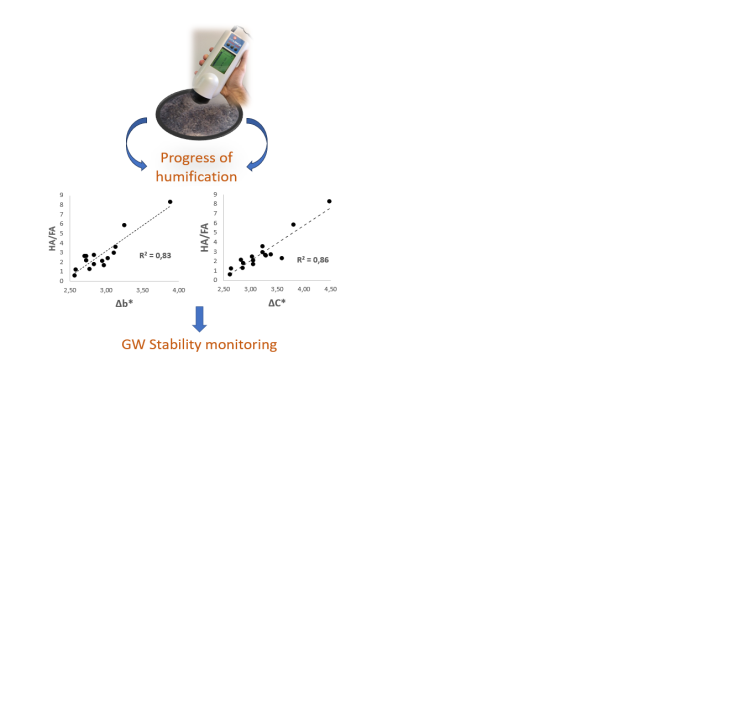
Compost stability is an essential parameter of composting. Recent studies have shown that the color of compost is influenced by the initial characteristics of the main organic substrates. In this study, the progression of CIELAB color variables and typical compost stability and maturity indices were monitored during composting of green waste (GW) with different characteristics from previous studies. Results showed that the color variables a*, b* and C* exhibited a constant downward trend and a strong correlation with composting time (R2 > 0.90). In addition, the color variables Δb* and ΔC* were found to be correlated with the humification of the compost, and in particular HA/FA with R2 values above 0.83. Δb* and ΔC* are not affected by the initial characteristics of the green waste. Therefore, they can be used to monitor the stability of GW compost, regardless of different composting parameters, such as windrow size, additional materials, conditions, initial properties, and waste treatment delays. Δb* and ΔC* values above 2.76 and 2.96, respectively, can be used as an indicator of an acceptable degree of GW humification. Color analysis is a quick and easy compost stability monitoring method, and it can complement standard stability physicochemical indices.
Total file downloads: 16